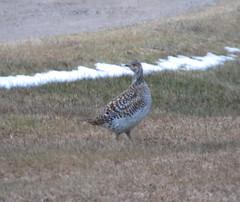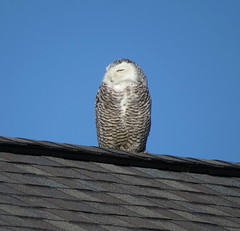Cincinnati Zoo Preserve, Ellis Lake/ West Chester Preserve, Voice of America, & Gilmore Ponds
What is it about bird watching that keeps us going out into the field as well as keeping our curiosity peaked? Is it the primeval instinct of being the hunter without the killing as we stalk that elusive Nelson’s Sparrow? Or is it the chase of adding another bird to your life list from a far away place? Meeting new people certainly justifies that attraction to birding. How about just getting outside after a very long, cold, snowy Winter. Spring is definitely in the air in the Ohio Valley with this last weekend, as temps soared into the 50’s with sunny skies. And as is my usual custom I dropped Jon a text about a Sunday field trip.
So to get back to my original question. What is it about bird watching that keeps us going out into the field, as well as keeping our curiosity peaked? Well today it’s our Spring time visitors, the wading birds. All of those “Sandpipers” are making a big comeback with some outstanding numbers being reported. So not wanting to be left out on all this fun we decided to keep our birding adventure in the Butler County area.
Last year the Cincinnati Zoo property was quite the go to spot for wading birds. The recent rains have been a blessing for this hotspot, but not yesterday. A good 30 minute scan turned up nothing but ducks, which isn’t a bad thing. But when your looking for waders you limit your time at each location till you find them.
We moved on.
It was during our drive to Ellis Lake that we stopped at Voice of America Park for a quick drive through. Well it seems that the Butler County Metroparks has been busy with redesigning the park around. Less grasslands and more water with more ducks. We weren’t necessarily looking for wading birds here, it seemed nature to stop since we were driving by.
We moved on.
It was pretty obvious that water wasn’t draining as fast as it usually does. The farm field which was now reduced to just corn stubble was practically under water. And once again there were plenty of ducks to be found. We had a feeling that there had to be wading birds amongst the corn stubble, it’s just that we couldn’t locate any. That was until a Red-tailed Hawk flew over and sent the majority of the birds airborne. I was able to pick out 2 waders in the chaos of wings and feathers. But before I was to ID them they lighted, and then gone.
We moved on.
It was a short drive to Gilmore Ponds, which was going to be our last stop for the day. Now what both Jon and myself will discuss before we reach any location is what might we find here. Gilmore Ponds has been a good spot for the “Black Bird” species, Rusties, Red-winged, & Grackles. And for myself I always hold out for some Rusty Black Birds, which is turning into one of my favorite birds. Their numbers are rapidly declining due to all sorts of various reason, so finding a couple to get a photo of is always in the back of my mind. Gilmore Ponds is perfect habitat for them.
It was just a few weeks ago I was there during the evening to catch American Woodcocks displaying when a massive flock of “Black Birds” came in to roost for the night. It was too dark to discern species because of darkness, but I was confident that there had to be a few.
It was late morning when we arrived, and the din of birds calling filled the air. The parking lot fronts onto a flooded woodlot which covers a large area of this side of the park. We walked about 50 yards down the trail towards the noise when we started to scan the tree tops at all the “Black Birds”. Jon immediately pointed me in the direction of this tree top that held a couple of Rusties. Then there was some more…and more…and even more!
THEY WERE EVERYWHERE!
 They were…
They were…
 in the trees.
in the trees.
 And they were foraging on the water logged ground.
And they were foraging on the water logged ground.
It was the highest concentration of Rusty Black Birds either Jon or myself have ever seen. I think the most I’ve ever seen at one time was a couple of dozen while hiking the Loveland Bike trail in the vicinity of Spring Valley Wildlife Area. Granted there were a few Common Grackles and Red-winged Black Birds mixed in, but they were hard to pick out from all the Rusties. It was a spectacular sight.
We watched a awe as we tried to come up with an approximation as to how many Rusties there might be. We needed to submit the data we came up with to e-Bird and the Rusty Black Bird Blitz data base, so we had to make some educated guess. We agreed that there was probably 2 birds for every 30 square feet. So he calculated the area at Gilmore Ponds from Google Earth and came up with approximately 1,500 Rusties. Which he told me was a conservative guess.
So I’ll ask myself again why do I keep going out into the field?
Need I say more.
Notable birds for the day include:
- Northern Cardinal
- Carolina Chickadee
- Northern Mockingbird
- Downy Woodpecker
- Northern Flicker
- Red-bellied Woodpecker
- Eastern Bluebird
- Eastern Meadowlark
- Mourning Dove
- Pied-billed Grebe
- Canada Geese
- Mallard
- Northern Shoveler
- Killdeer
- Green-winged teal
- American Pipit
- Blue-winged teal
- Red-winged Black Bird
- Common Grackle
- Rusty Black Bird
- Tree Swallow
- Northern Rough-winged Swallow
- Purple Martin
- Wilson’s Snipe
- Red-shouldered Hawk
- Red-tailed Hawk
- Turkey Vulture
- Northern Harrier
- Cooper’s Hawk
- Gadwall
- Lesser Scaup
- Greater Scaup
- Blue Jay
- Barn Swallow
- Horned Lark
- Gray Catbird
- Song Sparrow
- Field Sparrow
- American Tree Sparrow
- White-throated Sparrow
- Bufflehead
- Hooded Merganser
- American Coot
- American Wigeon
- Wood Duck
- Great Blue Heron
- Eastern Towhee
- Eastern Phoebe
- Great Egret
- Great Horned Owl
- Ring-necked Duck

























